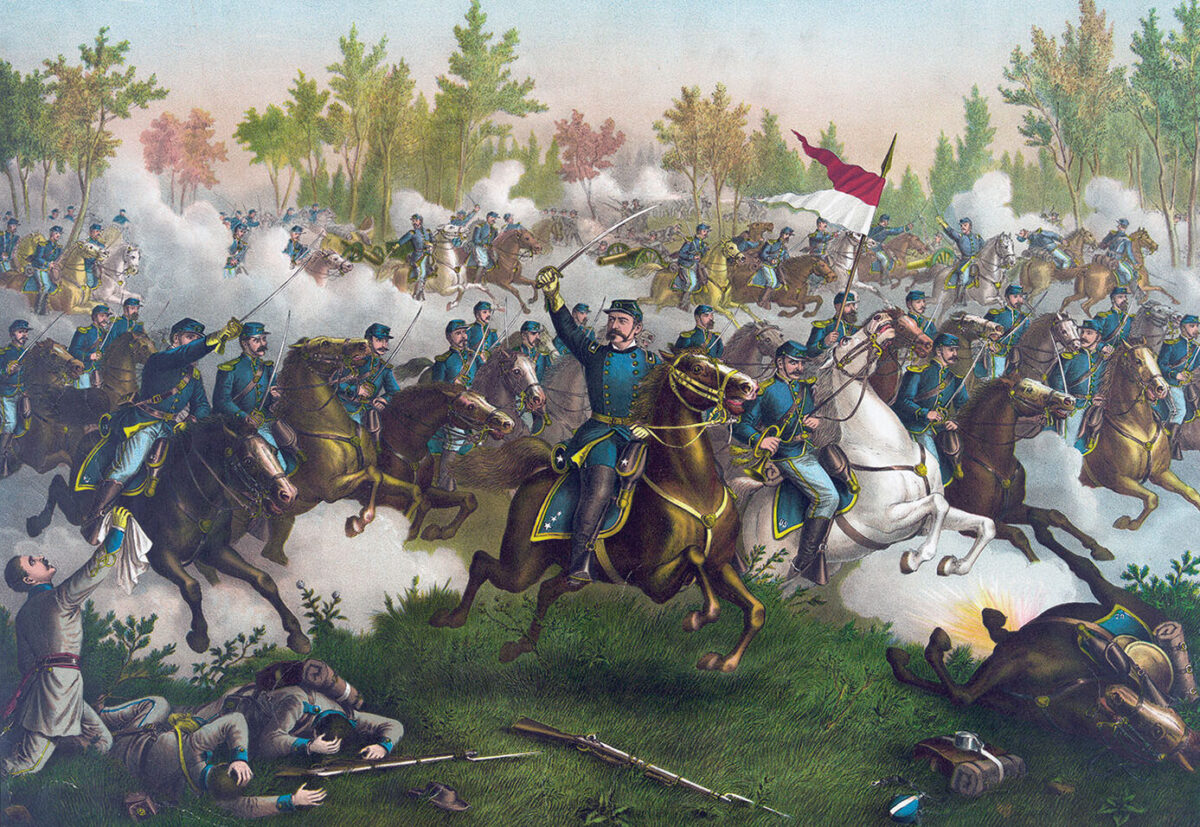In the wake of several losses to Maj. Gen. Philip Sheridan’s Army of the Shenandoah in early fall 1864, Confederate Lt. Gen. Jubal Early retreated south up the Shenandoah Valley. Believing the enemy beaten, Sheridan planned to return Maj. Gen. Horatio Wright’s VI Corps to assist Lt. Gen. Ulysses S. Grant and the Army of the Potomac in taking Petersburg, Va., key to accessing the Confederate capital of Richmond.
General Robert E. Lee, aware of the valley’s importance as the breadbasket of his beleaguered army, sent reinforcements to Early. The augmented army advanced north of Strasburg by October 13. Sheridan responded by recalling VI Corps to his camp along Cedar Creek.
Despite his concerns, Sheridan attended a war conference in Washington, D.C., leaving Wright in command. On his way back Sheridan spent the night of October 18 in Winchester, some 15 miles north of Cedar Creek.
With Sheridan away, Confederates atop Massanutten Mountain surveyed the Union positions. Noting vulnerability on the left flank, they devised a daring plan. At Cedar Creek Union Brig. Gen. George Crook’s Army of West Virginia was on the left near the river, Brig. Gen. William Emory’s XIX Corps was in the center and Wright’s VI Corps was on the right. Farther right was Maj. Gen. Alfred Torbert’s Cavalry Corps, with divisions led by Brig. Gens. Wesley Merritt and George Custer.
On the night of October 18–19 Confederate Maj. Gen. John B. Gordon marched along the base of Massanutten with three columns, crossing the river on Crook’s left before dawn. Early moved down the Valley Pike with the divisions of Maj. Gen. Joseph Kershaw and Brig. Gen. Gabriel Wharton. Kershaw opened fire about 5 a.m. and advanced on Crook while Gordon attacked Col. Rutherford B. Hayes’ division on Crook’s left. The Confederates routed Crook’s force.
Gordon mistakenly believed Sheridan was at nearby Belle Grove Plantation and hoped to capture him. Meanwhile, Wright and Emory formed a defensive line along the Valley Pike. Wharton attacked across Cedar Creek, driving Union forces beyond Belle Grove.
With Crook and Emory beaten, Wright’s VI Corps resisted Confederate attacks along the creek, which covered the high ground north of Belle Grove. This allowed time for a retreat northward, enabling the infantry to regroup.
After skirmishing with Maj. Gen. Thomas Rosser’s Confederate horse, Torbert’s cavalry moved left of the Union line above Middletown, forcing Early to redeploy. Believing victory was at hand, Early failed to press his advantage.
Alerted to the attack, Sheridan rode hard. Arriving on the battlefield around 10:30 a.m., He placed VI Corps on his left and XIX Corps on his right, leaving Crook’s shattered army in reserve. Sheridan also shifted Custer’s cavalry to his right flank.
Placing himself in front, Sheridan rallied his men before preparing a counterattack. Around 3:30 p.m. Custer and XIX Corps advanced against the Confederate left and broke the enemy line. Shortly after, Sheridan ordered an advance. With his army disintegrating, Early escaped south.
Sheridan’s leadership had reversed a potential Confederate victory, eliminating Early’s army as an effective fighting force. It also permanently restored the Valley of Virginia to the Union.
This article appeared in the March 2021 issue of Military History magazine.





